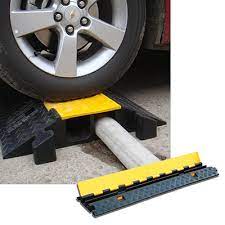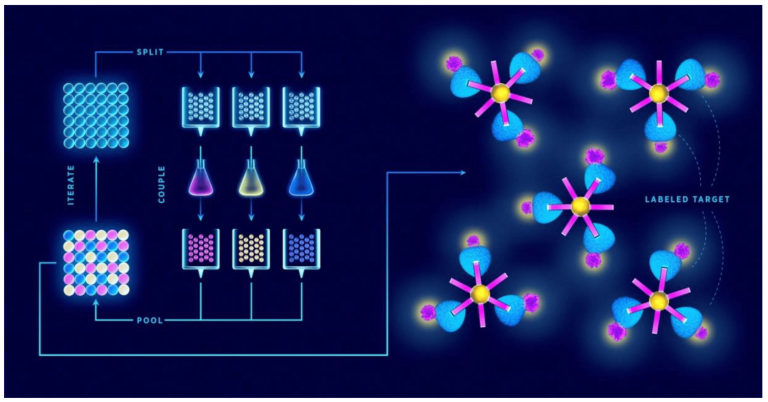Heavy-Duty Cable Protectors: Ensuring Safety and Durability for High-Traffic Areas
Heavy-duty cable protectors are essential safety tools for safeguarding power, data, and other cables in high-traffic environments. Whether in construction sites, industrial facilities, outdoor events, or warehouses, these cable protectors provide a reliable solution for preventing tripping hazards, protecting cables from damage, and ensuring uninterrupted power and communication. This article delves into the importance of heavy duty cable protector, their various types, key features, installation tips, and maintenance guidelines.
What Are Heavy-Duty Cable Protectors?
Heavy-duty cable protectors are robust coverings designed to encase and protect cables from environmental factors and physical pressure. Built to withstand high traffic and heavy loads from vehicles, equipment, and foot traffic, these protectors prevent wear and tear on cables, ensuring they remain functional and secure in demanding settings. Heavy-duty cable protectors come in different materials, sizes, and configurations to accommodate a variety of cable types and volumes.
Benefits of Heavy-Duty Cable Protectors
- Cable Protection and Longevity
Heavy-duty cable protectors shield cables from heavy loads, compression, and environmental damage. This reduces the risk of cable fraying, breakage, or other costly damage, prolonging cable life. - Enhanced Safety
Exposed cables in busy areas can be a significant tripping hazard. Cable protectors keep cables safely covered, reducing accidents and injuries. Many models come with non-slip surfaces to further enhance pedestrian safety. - Seamless Cable Management
By keeping cables organized and consolidated in a single pathway, cable protectors reduce clutter, making spaces safer and more visually tidy. This also simplifies tracking and maintenance for technicians. - Weather and Chemical Resistance
Many heavy-duty cable protectors are designed to resist chemicals, oils, and harsh weather conditions, making them suitable for both indoor and outdoor environments where exposure to such elements is common.
Types of Heavy-Duty Cable Protectors
Heavy-duty cable protectors come in various types to accommodate different applications and environments:
- Single-Channel Cable Protectors
These are designed for protecting a single cable or hose, ideal for situations where only one line needs to be protected. They’re often lightweight yet sturdy, offering a quick solution for basic cable protection needs. - Multi-Channel Cable Protectors
With two, three, or more channels, these protectors can accommodate multiple cables at once, making them suitable for complex environments where several types of cables are in use. Multi-channel protectors allow for easier organization by keeping cables separated within designated channels. - Drop-Over Cable Protectors
These heavy-duty protectors can be quickly placed over existing cables without needing to lift or disconnect them. They are typically used for short-term protection in events or temporary setups. - Modular Cable Protector Systems
Modular systems allow multiple units to be connected, covering extended areas. They are ideal for construction sites, festivals, or areas with large vehicle traffic as they can be scaled up or down according to the coverage needed. - Low-Profile Cable Protectors
Low-profile protectors are designed with a shallow height to minimize tripping hazards. They’re suited for environments where the protector needs to be crossed by foot traffic frequently. - Heavy-Duty Hose Protectors
These protectors are engineered to accommodate industrial hoses and are built to handle extreme weight and environmental pressures, often found in construction and manufacturing facilities.
Key Features to Look for in Heavy-Duty Cable Protectors
When selecting a heavy-duty cable protector, consider the following essential features:
- Load Capacity
Cable protectors are rated for different load capacities, typically measured in pounds or tons. Heavy-duty options can often support up to several tons, ensuring they can handle large vehicles and heavy equipment without compromising cable integrity. - Durable Materials
Most heavy-duty protectors are made from polyurethane or rubber, materials known for their impact resistance and flexibility. Polyurethane is lightweight and highly durable, making it suitable for outdoor use. Rubber provides strong grip and shock absorption. - Slip-Resistant Surface
A textured, non-slip surface is crucial for pedestrian safety, especially in wet or high-traffic areas. This feature minimizes the risk of slipping and adds a layer of stability. - Bright, High-Visibility Colors
Heavy-duty cable protectors often come in colors like yellow and black, making them highly visible in both day and night settings. This visibility warns pedestrians and drivers of potential hazards, helping them navigate safely around the protector. - Connector Options
Many protectors come with interlocking connectors, allowing multiple units to be linked together to cover longer distances. This modular design adds flexibility and customization, ensuring the protector can adapt to different layouts. - Weather and Chemical Resistance
Heavy-duty cable protectors designed for outdoor or industrial use should resist UV radiation, oil, chemicals, and extreme weather, preserving their durability over time. - Multiple Channel Options
Multi-channel protectors offer flexibility by allowing separate pathways for different types of cables, which is particularly useful for complex setups involving electrical, data, and power cables.
Installation Tips for Heavy-Duty Cable Protectors
- Choose an Appropriate Location
Place the cable protector in areas where cables are most likely to be damaged by traffic. Consider both pedestrian and vehicle routes when choosing the location. - Secure Connections in Modular Systems
When using modular cable protectors, ensure that each section is securely connected to avoid shifting. Interlocking connectors should be tightly fastened, creating a stable, seamless line across the length of the path. - Route Cables Properly Through Channels
For multi-channel protectors, organize cables by type and function, placing them in separate channels to avoid interference and reduce clutter. This arrangement simplifies future maintenance and troubleshooting. - Use Anchors or Adhesives for High-Traffic Areas
In locations with heavy foot or vehicle traffic, it may be necessary to anchor the cable protectors to prevent them from shifting or moving. Some protectors come with pre-drilled holes for this purpose, or you can use adhesive strips for a more permanent solution. - Regularly Inspect for Wear and Tear
Heavy-duty cable protectors are highly durable but still require periodic inspection to check for cracks, wear, or shifted sections. Promptly address any issues to ensure continued safety and performance.
Maintenance and Care for Heavy-Duty Cable Protectors
To maximize the lifespan of your cable protector, regular maintenance is essential:
- Routine Cleaning
Remove dirt, debris, and any spills that may accumulate on the surface. In outdoor or industrial settings, clean the protectors with water and a mild detergent to prevent the buildup of substances that could degrade the material. - Inspect for Damage
Heavy-duty protectors are designed to handle substantial pressure, but extreme usage can lead to wear. Inspect for cracks, warping, or broken connectors. Damaged sections should be replaced or repaired to avoid compromising cable protection. - Check Interlocking Connectors
Ensure that interlocking connectors are secure and in good condition. Loose or broken connectors can create gaps between protectors, increasing the risk of tripping and cable exposure. - Store Properly When Not in Use
For temporary or seasonal applications, store protectors in a cool, dry area when not in use. Avoid exposing them to extreme temperatures or direct sunlight, as prolonged exposure can cause materials to degrade.
Applications of Heavy-Duty Cable Protectors
Heavy-duty cable protectors are versatile tools suited for various settings, including:
- Construction Sites: Protecting power and data cables from damage by heavy machinery and maintaining a safe, organized site.
- Warehouse and Industrial Facilities: Managing power cables in high-traffic areas to prevent damage and ensure operational efficiency.
- Outdoor Events and Festivals: Temporary protection for lighting, sound, and power cables in high-traffic zones, ensuring safety and preventing service interruptions.
- Film and Media Production: Managing large volumes of cables for lighting, sound, and other equipment on set while minimizing tripping hazards.
- Parking Lots and Roadways: Shielding cables from vehicle traffic in temporary setups such as holiday lighting or power distribution.
Conclusion
Heavy-duty cable protectors are essential tools for safeguarding cables in high-traffic environments. With their ability to withstand heavy loads, provide effective safety measures, and keep cables organized, these protectors contribute to a safer, more efficient workspace. By choosing the right type of protector and following proper installation and maintenance practices, businesses can extend cable life, reduce accidents, and ensure smooth operations in challenging settings. Investing in high-quality heavy-duty cable protectors is a proactive step in cable management, protecting both infrastructure and people.






